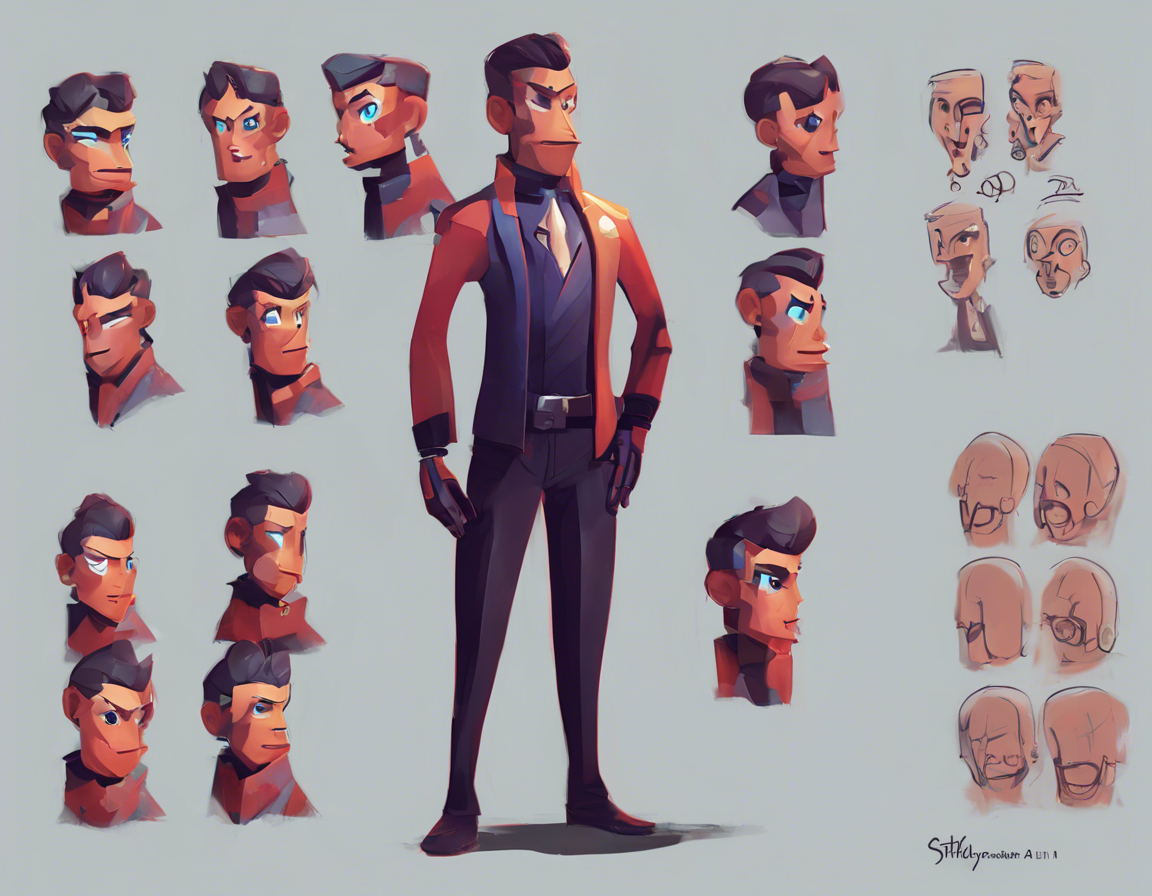Whether you are a seasoned writer or someone trying their hand at creating compelling characters in AI simulations, incorporating strikethrough text can be a powerful tool in adding depth and nuance to your creations. By using this formatting technique, you can create characters with layers of complexity, history, and emotion. In this comprehensive guide, we will delve into the art of using strikethrough text in character AI to elevate your storytelling game.
The Basics of Strikethrough Text
Strikethrough text is a formatting option that allows you to cross out words or phrases in your text. It is commonly used to signify changes, revisions, or alternative thoughts. In character AI, incorporating strikethrough text can be a creative way to showcase a character’s internal conflicts, hidden desires, or past experiences. By striking through certain words or phrases, you can provide glimpses into a character’s inner turmoil or reveal secrets that shape their motivations.
Why Use Strikethrough Text in Character AI?
-
Showcase Inner Thoughts: By using strikethrough text, you can give readers insight into a character’s unspoken thoughts or conflicting emotions.
-
Create Mystery and Intrigue: Strikethrough text can add an element of mystery to your characters, hinting at hidden pasts or undisclosed secrets.
-
Demonstrate Character Development: Through strikethrough text, you can visually represent a character’s growth or change over time.
-
Engage Readers: The visual representation of strikethrough text can capture the reader’s attention and encourage them to delve deeper into the character’s story.
Implementing Strikethrough Text in Character AI
When integrating strikethrough text in character AI, it’s essential to do so thoughtfully and purposefully. Here are some tips on how to effectively implement strikethrough text to enhance your characters:
1. Revealing Inner Conflicts
Use strikethrough text to showcase a character’s conflicting emotions or thoughts. For example:
Original Text: I have always been loyal to my country.
Strikethrough Text: I have always been loyal to my family.
2. Unraveling Hidden Secrets
Employ strikethrough text to hint at a character’s unrevealed secrets or past experiences. For instance:
Original Text: She was a model citizen.
Strikethrough Text: She was a fugitive on the run.
3. Depicting Emotional Complexity
Utilize strikethrough text to demonstrate a character’s emotional depth and complexity. For example:
Original Text: He was fearless in the face of danger.
Strikethrough Text: He was trembling with fear inside.
4. Signifying Character Growth
Show a character’s evolution or development by using strikethrough text. For instance:
Original Text: She despised her mentor.
Strikethrough Text: She begrudgingly admired her mentor.
By judiciously incorporating strikethrough text in your character AI, you can add layers of complexity and intrigue, making your creations more engaging and memorable.
Best Practices for Using Strikethrough Text
While the use of strikethrough text can be a potent storytelling device, it’s essential to follow some best practices to maximize its impact:
1. Avoid Overuse
Reserve strikethrough text for key moments or revelations in your character’s narrative. Overusing it may diminish its effectiveness and come across as gimmicky.
2. Maintain Consistency
Ensure that the use of strikethrough text aligns with your character’s overall arc and story. Inconsistencies can confuse readers and detract from the character’s credibility.
3. Provide Context
Offer contextual clues or hints to help readers interpret the meaning behind the strikethrough text. Clear context can enhance the reader’s understanding and emotional connection to the character.
4. Experiment with Placement
Explore different placements of strikethrough text within your AI character’s dialogue or narrative. Placement can influence the emphasis and impact of the crossed-out words or phrases.
By following these best practices, you can effectively wield strikethrough text to enrich your character AI storytelling and captivate your audience.
Frequently Asked Questions (FAQs)
Q1: How do I format text with strikethrough in character AI?
To format text with strikethrough in character AI, you can typically use a specific syntax or formatting tool provided by the platform or software you are using. This formatting option is usually represented by a shortcut key or toolbar icon.
Q2: Can strikethrough text be used in conjunction with other formatting styles?
Yes, you can combine strikethrough text with other formatting styles such as bold, italic, or underline to create visually engaging and nuanced character AI interactions.
Q3: How can I ensure that the use of strikethrough text enhances my character’s story?
Focus on using strikethrough text to reveal crucial insights, emotions, or conflicts that deepen your character’s narrative. Ensure that each instance of strikethrough text serves a purpose and adds value to the character’s development.
Q4: Are there any limitations to using strikethrough text in character AI?
While strikethrough text can be a powerful tool, it’s essential to be mindful of readability and clarity. Avoid using excessively long or convoluted strikethrough passages that may confuse or overwhelm the reader.
Q5: How can I test the effectiveness of strikethrough text in my character AI simulations?
Conducting user testing or gathering feedback from beta readers can help you evaluate how readers interpret and engage with the strikethrough text in your character AI. Adjustments can be made based on the feedback received to enhance the overall storytelling experience.
Unlock the full potential of your character AI narratives by mastering the art of using strikethrough text. With a blend of creativity, strategy, and attention to detail, you can craft characters that resonate with audiences and leave a lasting impression. Incorporate strikethrough text thoughtfully and watch as your characters come to life with depth, emotion, and authenticity.

